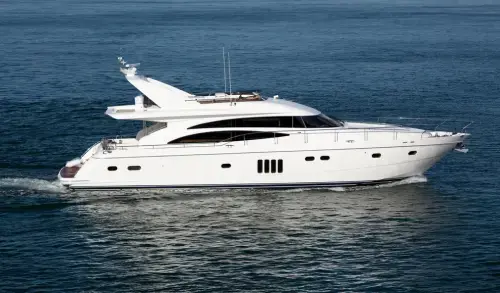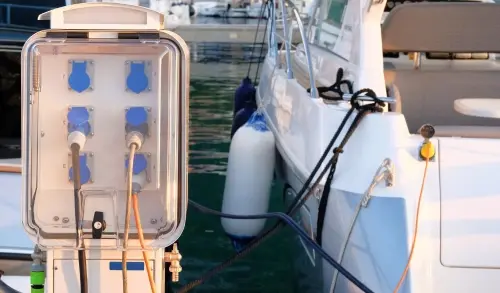Benefits of a Shore Power System
The ShorPOWER SHF system is one of the most dependable and versatileelectrical shore power convertersystem models available today. The ShorPOWER...
2 min read
Atlas Marine Systems : Aug 6, 2025 9:37:00 AM

For modern yachts, power systems demand more than compatibility; they require precision, thermal efficiency, and smart integration with onboard infrastructure. While shore power frequency converters are common, their location can significantly influence performance and vessel design.
Placing the frequency converter in the engine room offers strategic advantages. From leveraging existing ventilation to freeing up space in guest or service areas, this approach supports better system reliability, simplified layouts, and long-term operational efficiency.
A power converter takes electrical input from the dock, often a different voltage or frequency than the yacht’s onboard systems require, and transforms it into clean, stable power for the vessel’s electrical infrastructure. It ensures compatibility with global marine power standards and protects onboard systems from power irregularities that could otherwise cause damage or failure.
A shore power frequency converter will perform its job wherever it’s installed, but placement affects more than just function. It impacts how easily the system can be accessed, how efficiently it manages heat, and how much space is left for guest or storage areas.
The real differences come down to how well the converter fits into the yacht’s layout:
Does it take up space that could be used for guest amenities?
Will it require extra cooling equipment to stay within the operating temperature?
Is it easy to service, inspect, or upgrade when tucked in a tight space?
That’s why more naval architects and marine engineers are choosing to locate converters in the engine room, where existing infrastructure supports both performance and practicality.
While the technical performance of a shore power frequency converter remains consistent regardless of where it's installed, placing it in the engine room creates distinct benefits that improve both vessel design and operational reliability.
Guest experience is a priority on any yacht, and space in the aft end of the vessel is often reserved for luxury amenities like tender garages, lounge space, or watersports storage. By moving the converter to the engine room, designers and owners reclaim this prime real estate for guest enjoyment or expanded functionality.
Additional Consideration: When shifting converter placement, confirm adequate clearance for service access and future upgrades. Tight layouts should still allow for safe technician entry and airflow around the unit.
Shore power converters generate heat, especially under continuous load. Locating the converter in the engine room allows it to tap into the yacht’s existing ventilation systems, eliminating the need for a standalone cooling solution. This not only reduces equipment and installation costs, but also improves long-term reliability by avoiding separate fan systems that require their own maintenance.
Additional Consideration: While most engine room ventilation systems meet converter specs, ensure that ambient temperatures remain within manufacturer-defined limits. If needed, supplement with targeted airflow in high-demand zones.
Placing the converter near other critical systems, like generators, switchboards, and batteries, centralizes maintenance zones. This reduces the time and complexity involved in inspections, troubleshooting, or component replacements. Engineers can work more efficiently when everything is located in one service-ready area, rather than split across compartments.
Additional Consideration: Proper commissioning is essential. Work with certified marine electricians to ensure grounding, load synchronization, and firmware configurations are tailored to your vessel’s architecture.
Although modern converters are quieter than older models, placing them in the engine room helps contain residual noise or vibration away from guest areas. Keeping high-load electrical equipment centralized in one acoustically insulated space protects comfort levels throughout the vessel.
Locating the shore power frequency converter in the engine room is about more than convenience; it’s a smart use of space and infrastructure that supports better ventilation, cleaner layouts, and easier integration with onboard systems.
With decades of experience in marine electrical systems, Atlas Marine Systems provides engineered shore power conversion solutions that meet the demands of modern vessels and the expectations of technical professionals.
Contact our team to learn more about shore power frequency converter options, integration support, and how Atlas Marine can help optimize your vessel’s power system.

The ShorPOWER SHF system is one of the most dependable and versatileelectrical shore power convertersystem models available today. The ShorPOWER...

A power conditioner powers and protects the expensive technology on your yacht and provides useful additional benefits. Below, Superyacht Technology...

Today’s yachts require more electrical power than a single shore power cord can reliably deliver, especially in marinas with limited or mismatched...